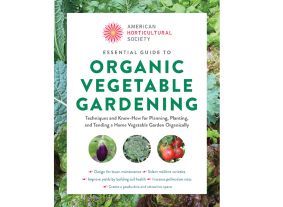Recipe: Homemade Insecticidal Soap
Views: 15794
Here’s the thing about gardens: You and your plants make it through the bizarre twists and turns of spring weather, they grow like crazy when the temps reach late-spring perfection, and then it hits. Or I should say, they hit. And by they, I mean pests.
The pests I’m referring to are aphids, those soft-bodied, less-than-an-inch big, lime-green or reddish-brown little critters. You can typically find them on the undersides of leaves, or if you have a really severe infestation, on the soft, young tissues of your favorite plants. They aren’t chewing creatures, thank goodness. Instead they stick their feeding tube into the plant’s tissues and suck up the juices. There’s a bit of backwash going on, too, where the aphid’s saliva finds its way into the plant.
Like most everything in the world, aphids arent terrible when there are just a few, but they can wreak havoc when found en masse. And what I found this week on some tomatoes is definitely considered en masse. Just look at the photo above.
When found in large numbers, aphids feeding can cause wilting, leaf curling, and delayed development. And remember that aphid backwash? That’s one way diseases are transmitted from plant to plant.
Repelling Aphids in the Garden
There are three ways I try to rid plants of aphids.
1. Squish them. When there are just a few aphids, it doesnt take much time to squish each one. Unless you dont have the stomach for that kind of thing.
2. Blast em. If you have more than you can squish, a good spray with a garden hose should knock them off the plant. It doesnt kill them and they might come back, but at least it gives you some time until you can
3. Squirt em with insecticidal soap. This is a soapy liquid that covers the aphid and dissolves the aphids waxy outer layer. How? The fatty acids found in REAL soap dissolve the wax and the aphids body fluids leak out, killing it. At least thats how I understand it. Its a contact insecticide, meaning it kills the critters immediately and doesnt have to be ingested. And when I say real soap I mean something that actually says soap, not a cleansing bar or beauty bar. Think Ivory, either in bar form or liquid form.
Homemade Insecticidal Soap
I found two recipes online for a homemade insecticidal soap that you can make with items found in your home. I winged it and combined the two.
You will need:
A quart mason jar or 1-liter bottle
A spray bottle
1 normal sized bar of real soap
3-4 cups of hot water
1 cup vegetable oil or a bit less
Extra water
1. Grate the soap and put into the mason jar or 1-liter bottle. Add the hot water—it should be hot enough to dissolve the soap with agitation. Add the oil. Cover the jar and shake/agitate until most or all of the soap is dissolved. The oil won’t dissolve, but that’s fine.
2. In your spray bottle, add 2 teaspoons of soapy concentrate to every 8 ounces of water. For example, my spray bottle holds 16 ounces, so I add 4 tsp of concentrate. NOTE: Shake concentrate vigorously before measuring.
Please note!!! Some plants are sensitive to insecticidal soap. Be sure to test a bit of the mixture on a leaf of the plant you want to spray it on first. Wait a day or two to see what happens. Preferably you’ll test it on the leaf AND an aphid. The aphid will die immediately. If the leaf and plant look fine after a couple of days, go ahead and spray the mixture on the aphids. You may want to check the plants for more aphids a 5-7 days later in case any eggs hatched or aphids missed being sprayed.
Also, the concentrate does thicken a bit over time. Make sure to shake well and add slightly less concentrate to the sprayer bottle. Otherwise, the your sprayer tube may become clogged.
Meet Ellen Wells
When you’re raised on a farm, you can’t help but know a thing or two about gardening. Ellen Wells is our expert on edible gardening.…
Ellen's Recent Posts

New Organic Vegetable Gardening Book






